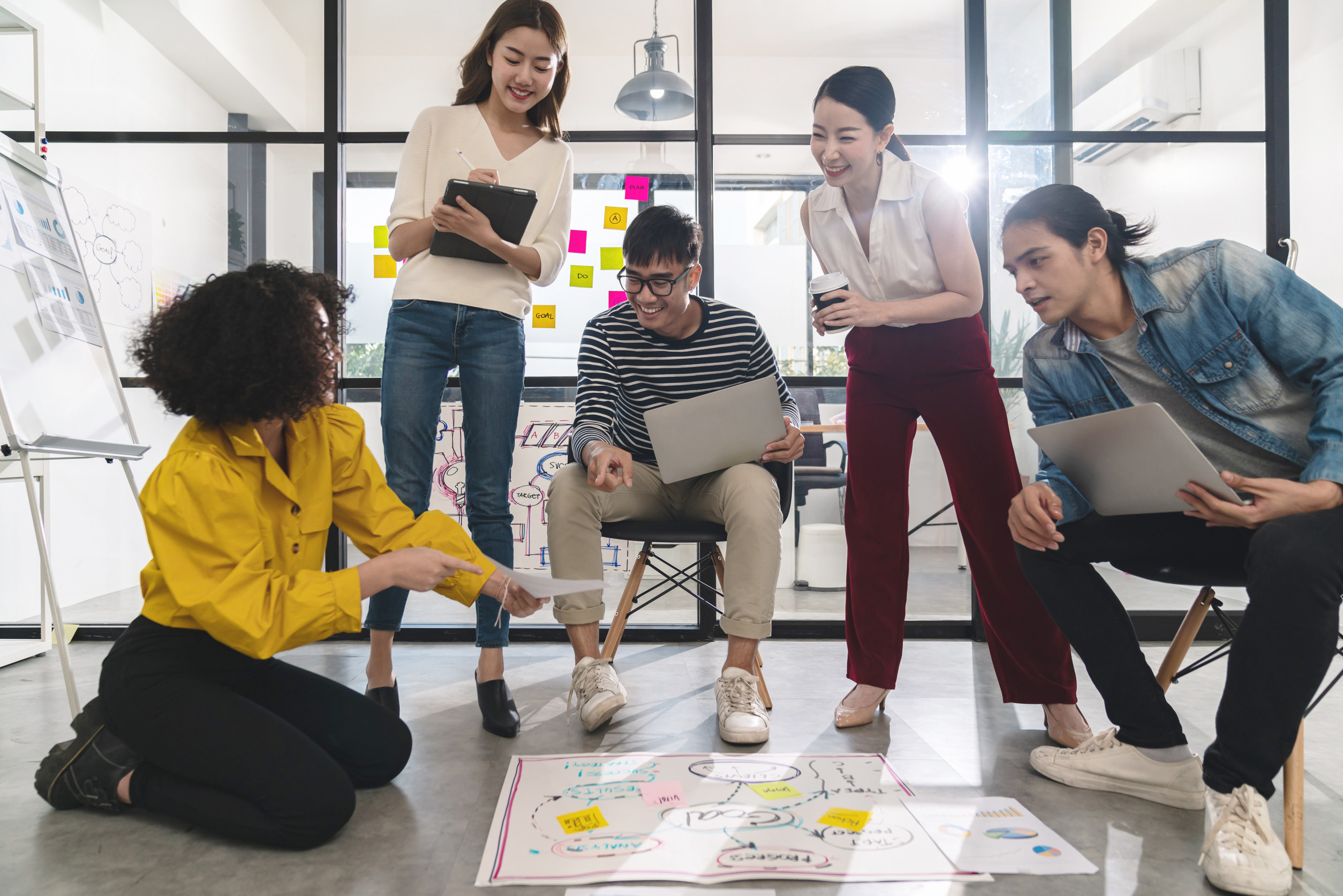The augmented human: Why HR is the architect of our AI-powered future
- Josephine Tan

The rise of AI is no longer a distant forecast. It is here, accelerating faster than even the boldest predictions had anticipated. What was once expected to unfold over a decade is happening in just a few short years, forcing organisations to rethink the very definition of work, jobs, and the role of HR in shaping the human side of this transformation.

Mark Onisk, Senior Managing Director, Talent Strategy and Transformation, Skillsoft, has been closely tracking this shift. “In today’s standard, about half of all work can already be performed by machines in some way, shape, or form,” he said during a recent webinar. “What’s striking is that just two years ago, the World Economic Forum projected that boundary to be around 40% by 2027. Instead, we’re already at 50% today, and it’s expected to reach nearly 66% within the next five years.”
Onisk believes that AI is not just changing how we work but fundamentally redefining what we do and why we do it. “The traditional definition of a job as a fixed set of tasks is outdated,” he told HRM Asia. “We’re moving towards dynamic roles where employees partner with intelligent systems to achieve outcomes. AI doesn’t just automate, it augments. It surfaces insights, predicts outcomes, and handles repetitive work, allowing humans to focus on creativity, empathy, and complex problem solving.”
The implications for HR are profound. Traditional workforce planning, where roles are mapped against fixed job descriptions, is no longer sufficient. Instead, HR must focus on skills-based design, where employees’ capabilities are continuously assessed, developed, and redeployed in response to business needs.
“Skills rather than job titles are now the currency of performance,” Onisk said. “Leaders will need real-time visibility into workforce capabilities, the agility to respond as needs shift, and learning that is accessible in the moment.”
This shift is particularly urgent in sectors such as manufacturing, logistics, and services, where the adoption of AI is rapidly reshaping value chains. For example, predictive analytics in logistics can streamline operations; however, the real differentiator lies in how people apply those insights—deciding where to intervene, how to solve problems, and how to enhance customer experience.
Nowhere is this transition more complex—or promising—than in South-East Asia. The region’s economies are modernising rapidly, but their levels of digital maturity vary significantly.
“For leaders in South-East Asia, this is a pivotal moment to lead that redefinition and rearchitect what a future-ready workforce looks like,” Onisk noted. “That means assessing where AI creates value, identifying which functions can be automated, and guiding employees into roles that leverage uniquely human strengths.”
Looking ahead five to 10 years, Skillsoft envisions a workplace where AI is deeply integrated into every job across South-East Asia. Onisk’s boldest prediction is “the widespread integration of AI agents, and AGI (Artificial General Intelligence), as a fundamental part of the talent pipeline, working alongside people in skill-based rather than role-based teams.” These intelligent systems will anticipate needs, provide real-time insights, and autonomously manage routine tasks, freeing human employees for strategic, interpersonal, and creative endeavours.
The emergence of “digital twins”—AI models that mimic individual decision-making to test scenarios—will further guide strategy. Leadership roles will also evolve, requiring new forms of emotional intelligence, digital fluency, and agile skills development to manage blended human and AI teams.
To prepare for this reality, HR leaders must prioritise building data and AI literacy within their organisations. Onisk pointed out that “most talent systems were built for fixed roles, not for agile, skill-based workforces where humans and AI learn, adapt, and perform together.” In this future, skills, not job titles, will be the currency of performance. HR will need real-time visibility into workforce capabilities, the agility to adapt to shifting needs, and accessible, in-the-moment learning solutions.
“Building skills can no longer be treated as a side task. It is a core growth strategy essential to unlocking potential, accelerating performance, and staying ready for what comes next,” Onisk asserted. Continuous upskilling, internal mobility, and an understanding of regional AI governance frameworks, ranging from Singapore’s mature policies to those in emerging countries, will be crucial for the ethical and compliant adoption of AI.
Culture as the core of AI readiness
While technical readiness is crucial, Onisk cautions that culture is the true linchpin of AI adoption. “AI readiness is not just about acquiring technical skills, it’s about fostering a deep cultural transformation and accountability within organisations,” he said.
Fear of replacement is particularly acute in Asia, where job security often underpins family and community wellbeing. Onisk pointed to a striking disconnect: “Some studies suggest that the frontline is three times more likely to use AI for everyday tasks than leadership believes. The pressure is truly on leaders to mobilise their teams to advance their organisations with the technology.”
To close this gap, HR must champion psychological safety and transparency. Employees need to know not only how AI will be applied but also how it benefits them and the business. “Framing AI as a partner in achieving better outcomes is essential,” Onisk emphasised.
Practical steps include embedding continuous learning into the flow of work, offering resources in local languages, and creating safe spaces for experimentation. Importantly, HR leaders must normalise learning from mistakes. “In cultures where mistakes are often avoided, recognising effort, not just outcomes, helps normalise change and build confidence,” he said.
Equally important is the development of “power skills”—resilience, collaboration, and problem-solving—that help employees navigate disruption and thrive in blended human-machine environments.
The learning ecosystem of tomorrow
Given the pace of change, traditional, event-based learning models are no longer fit for purpose. The future demands a learning ecosystem that is as dynamic and adaptive as the technology it supports. “Our vision is to build a dynamic, AI-powered learning ecosystem that continuously adapts to the needs of both individuals and businesses,” said Onisk.
This new model is about more than just content delivery. As Onisk puts it, “It’s about embedding learning into the flow of work, personalised to each employee’s role, ambitions, and skills gaps.” AI itself is the engine of this transformation, capable of recommending the most relevant microlearning, simulation, or coaching at the precise moment of need, allowing employees to skill up without stepping away from their responsibilities. Real-time analytics give HR leaders the power to see emerging skill gaps and respond proactively, turning learning from a cost centre into a strategic lever for growth.
The rapid evolution of AI may feel overwhelming, but Onisk is clear: technology alone will not define the future of work. “The future of work in Asia will be shaped not just by the tools we adopt, but by the cultures we cultivate,” he concluded, “and HR is at the heart of that evolution.”






